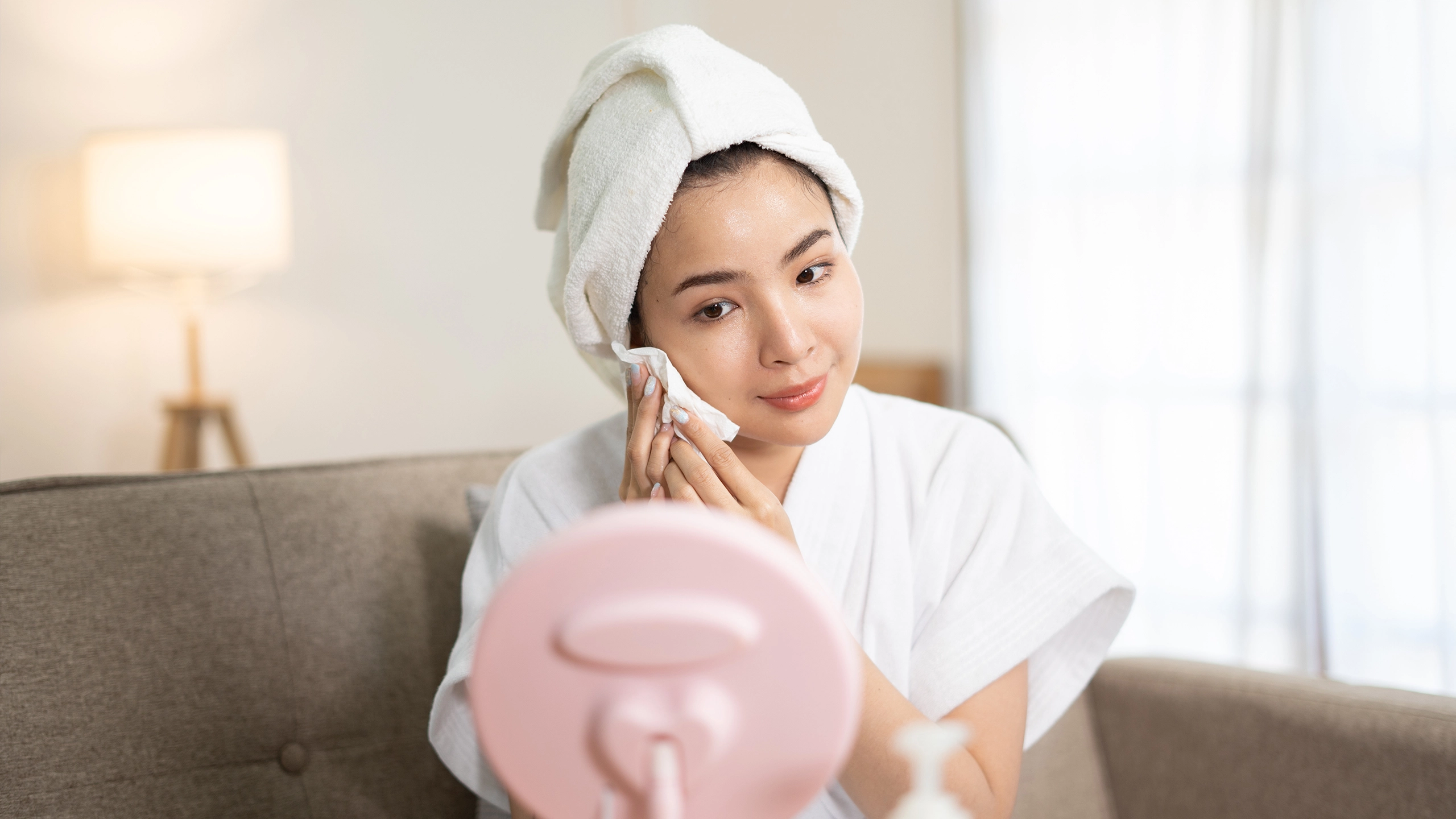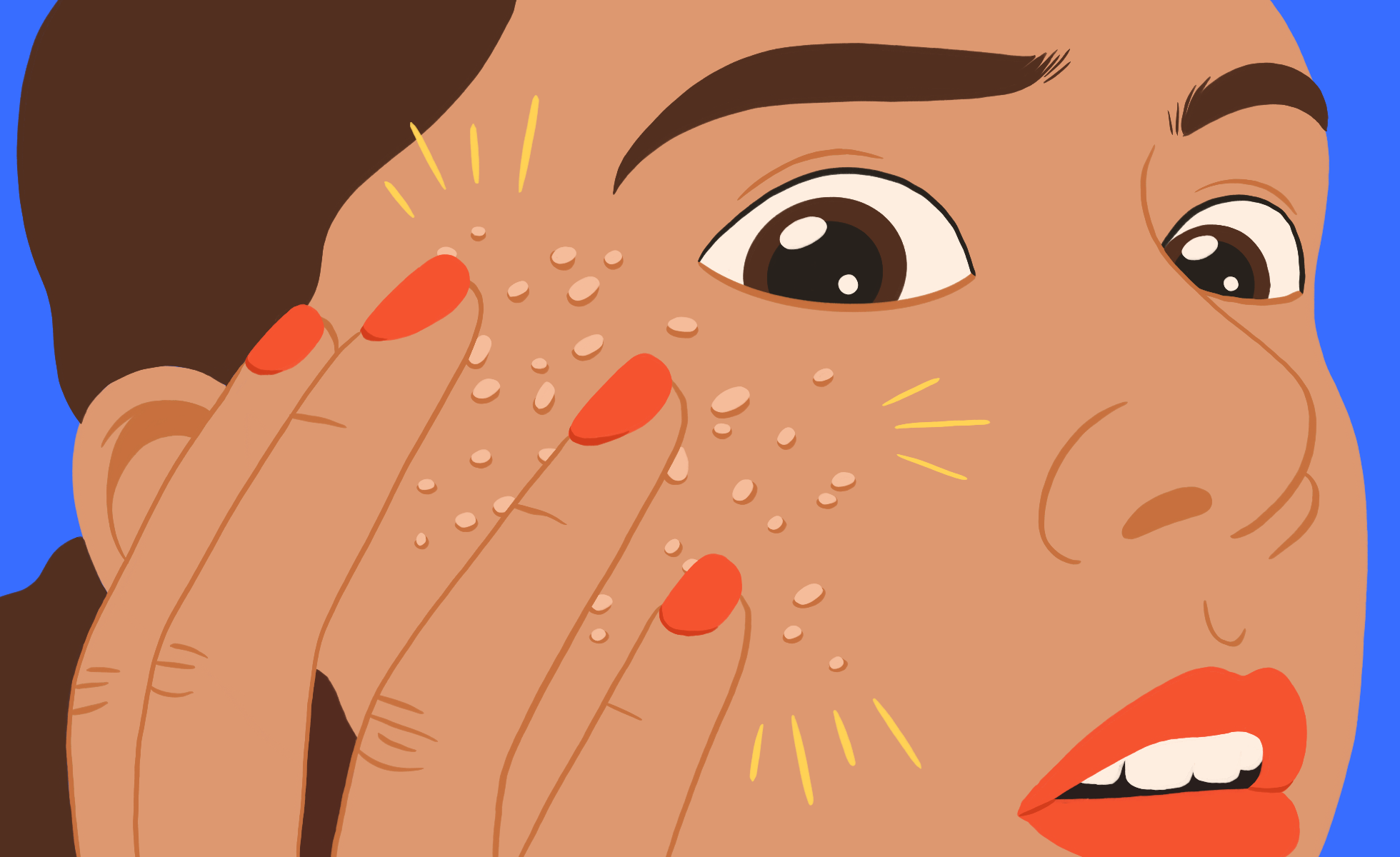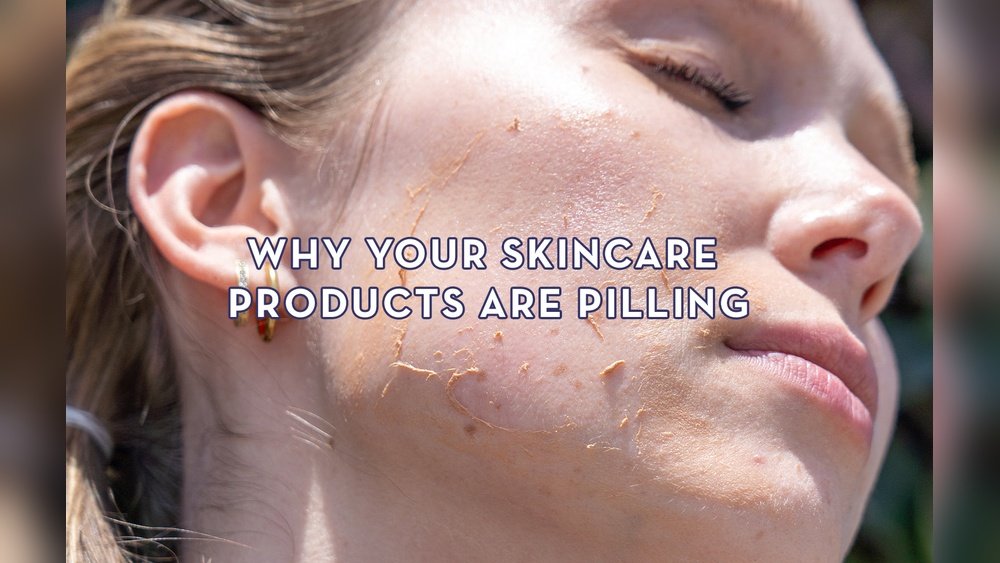Have you ever noticed those annoying little balls or flakes forming on your skin after applying skincare or makeup? That’s called product pilling, and it can ruin your flawless look in seconds.
If you’ve been struggling with this frustrating problem, you’re not alone—and the good news is, you can stop it. Understanding why pilling happens and learning simple steps to prevent it can save your skin routine and boost your confidence. Keep reading, because we’re about to reveal easy, effective ways to keep your skin smooth and your products working their best—no more pilling, no more frustration.

Credit: www.youtube.com
Causes Of Fabric Pilling
Fabric pilling happens when small fiber balls form on the surface of clothing. These tiny balls make clothes look old and worn out. Understanding the causes of fabric pilling helps prevent it and keep clothes looking new.
Pilling occurs because fibers in the fabric rub against each other or other surfaces. This rubbing causes loose fibers to tangle and form pills. Different fabrics and weaves react differently to friction.
Fiber Type And Quality
Fabrics made from short fibers pill more easily. Natural fibers like wool and cotton can pill if the fibers are short. Synthetic fibers such as polyester may pill due to their smooth texture. High-quality fibers are less likely to pill because they hold together better.
Fabric Construction
Tightly woven fabrics resist pilling better than loosely woven ones. Knitted fabrics pill more than woven fabrics because of their loops. Blended fabrics sometimes pill more because different fibers react differently to friction.
Friction And Wear
Rubbing against other fabrics, bags, or rough surfaces causes pilling. Areas with frequent movement, like under arms or on sleeves, pill faster. Washing and drying also create friction that leads to pills.
Care And Maintenance
Using harsh detergents or washing on high speed increases pilling. Overloading the washing machine causes more friction between clothes. Skipping gentle cycles can damage fibers and cause pills.

Credit: allure.ph
Choosing The Right Fabrics
Choosing the right fabrics plays a key role in preventing product pilling. Fabrics vary in texture, weave, and fiber type. These differences affect how they wear over time. Selecting fabrics that resist pilling helps keep clothes looking fresh longer.
Natural fibers tend to pill less than synthetic ones. Some blends offer a good balance of comfort and durability. Understanding fabric types guides better shopping decisions.
Natural Fibers Resist Pilling
Cotton, linen, and wool are natural fibers known for durability. These fibers have longer strands, which reduce the chance of pills forming. Clothes made from these materials usually last longer without pilling. They also feel soft and comfortable on the skin.
Synthetic Fabrics May Pill Easily
Polyester, nylon, and acrylic are common synthetic fibers. They often have shorter fibers that break and tangle. This creates small fabric balls called pills. Synthetic fabrics can look worn quickly due to pilling. Choosing high-quality synthetics or blends can reduce this issue.
Blended Fabrics Offer A Middle Ground
Blends combine natural and synthetic fibers to improve fabric performance. For example, cotton-polyester blends balance softness and strength. These blends can resist pilling better than pure synthetics. Check fabric labels to understand the fiber mix before buying.
Look For Tight Weaves And Knits
Tightly woven or knitted fabrics hold fibers firmly in place. This reduces fiber movement that causes pilling. Fabrics with a smooth surface also tend to pill less. Avoid loose or fluffy fabrics if you want to prevent pilling over time.
Proper Washing Techniques
Proper washing techniques play a key role in preventing product pilling on fabrics. Pilling happens when small fibers break and form tiny balls on the surface. Washing clothes the right way helps keep fabrics smooth and looking new for longer. Simple habits can protect your clothes from damage and reduce pilling.
Using the correct washing method is the first step. It preserves the fabric’s texture and quality. Follow these easy tips to extend the life of your garments and avoid pilling.
Use Gentle Cycle And Cold Water
Select the gentle cycle on your washing machine. It uses slower agitation to protect delicate fibers. Cold water prevents fibers from weakening. Hot water can cause shrinkage and increase friction between fibers. Cold water keeps the fabric fibers intact and reduces pilling.
Turn Clothes Inside Out
Turn garments inside out before washing. This protects the outer surface from rubbing against other items. It lowers direct friction that causes fibers to break. Inside-out washing helps keep the outside smooth and free from pills.
Choose Mild Detergent
Use a mild detergent designed for delicate fabrics. Harsh detergents can damage fibers. Gentle formulas clean without stripping natural oils. This keeps fibers stronger and less prone to pilling.
Wash Similar Fabrics Together
Group clothes by fabric type and weight. Heavy fabrics like jeans cause more friction on lighter ones. Washing similar fabrics together reduces rubbing. This lowers the chance of fibers loosening and pilling.
Avoid Overloading The Washer
Do not overload the washing machine. Crowding clothes increases friction between items. It also stops proper rinsing and cleaning. Leave enough space for garments to move freely. This reduces fabric stress and prevents pilling.
Skip The Dryer Or Use Low Heat
Air dry clothes when possible. Heat from dryers weakens fibers and causes pills. If using a dryer, select the low heat or air fluff setting. Remove clothes while still slightly damp to avoid over-drying. This helps maintain fabric strength and smoothness.

Credit: www.beautylish.com
Effective Drying Methods
Drying methods play a key role in preventing product pilling on fabrics. Proper drying helps maintain the fabric’s surface and reduces fiber friction. Choosing the right drying technique extends the life of your clothes and keeps them looking fresh.
Incorrect drying can cause fibers to break and create small pills. Using gentle drying methods protects the fabric and lowers pilling risk. Below are effective drying techniques to help you care for your garments.
Air Drying For Gentle Fabric Care
Air drying is the safest method to avoid pilling. Hanging clothes naturally allows fibers to relax without harsh agitation. Use a drying rack or clothesline in a well-ventilated area. Avoid direct sunlight to prevent color fading and fabric damage.
Air drying slows down fiber wear and tear. This method works well for delicate and knit fabrics prone to pilling. Make sure clothes are spread out evenly to dry faster and keep shape.
Low Heat Setting In Dryer
When machine drying is necessary, use a low heat setting. High heat causes fibers to weaken and pill faster. Select the “delicate” or “gentle” cycle to reduce friction inside the dryer. Remove clothes promptly to avoid over-drying.
Consider adding dryer balls to separate clothes and improve air flow. They help reduce static and minimize fabric rubbing. Low heat drying protects fabric texture and keeps garments soft.
Use Of Dry Towels To Reduce Friction
Adding dry towels during the drying process can lower fabric friction. Towels absorb moisture and reduce the tumbling impact on clothes. This simple trick prevents fibers from rubbing harshly and forming pills.
Place one or two clean, dry towels with your wet clothes inside the dryer. This method works well for heavier fabrics like cotton and fleece. It helps clothes dry evenly and protects delicate fibers.
Storage Tips To Prevent Pilling
Proper storage plays a key role in preventing product pilling. Storing your items correctly helps maintain their quality and reduces fabric friction. This keeps your products smooth and free from unwanted fuzz.
Follow these storage tips to keep your clothes and textiles in great shape. They are easy to apply and protect your items from damage that causes pilling.
Store Clothes In A Cool, Dry Place
Heat and moisture weaken fibers and increase pilling risk. Choose a cool, dry area for your clothes. Avoid damp basements or sunny spots where fabric can degrade fast.
Use Smooth Hangers Or Fold Clothes Neatly
Rough hangers cause friction that leads to pilling. Opt for padded or wooden hangers with smooth edges. Folding delicate fabrics reduces stretching and rubbing.
Separate Fabrics By Type
Mixing rough and soft fabrics causes abrasion and pills. Store sweaters, knits, and silks separately. Keep heavy items away from delicate ones to avoid friction damage.
Keep Clothes Clean Before Storing
Dirt and oils attract particles that rub against fibers. Wash or air out clothes before storage. Clean fabrics resist pilling better than dirty ones.
Use Breathable Storage Bags Or Containers
Plastic bags trap moisture and cause mildew. Use cotton or mesh bags that allow air flow. Proper ventilation keeps fibers fresh and strong.
Removing Pills Safely
Removing pills safely helps keep your clothes and fabrics looking fresh. Pills form from friction and wear. They look like small balls of fuzz. Removing these pills without damage is key to extending your fabric’s life.
Use gentle methods to avoid tearing or stretching the fabric. Careful removal keeps your items neat and wearable longer.
Using A Fabric Shaver
A fabric shaver is a small tool designed to remove pills quickly. Turn it on and gently move it over the fabric surface. Do not press too hard to avoid damage. It works best on thicker fabrics like sweaters and blankets.
Removing Pills By Hand
For delicate fabrics, use your fingers or a pair of scissors. Carefully pick off pills one by one. Scissors should be sharp and used with caution to avoid cutting the fabric threads.
Using A Lint Roller Or Tape
A lint roller or sticky tape can lift smaller pills. Roll or press gently on the fabric to pick up pills. This method is good for light pilling on smooth fabrics.
Washing Tips To Prevent Further Pilling
Wash clothes inside out to reduce friction. Use cold water and a gentle cycle. Avoid harsh detergents and fabric softeners that can weaken fibers.
Frequently Asked Questions
How Do I Stop My Skincare From Pilling?
Apply skincare products from thinnest to thickest, allowing each layer to absorb fully. Use lightweight formulas and avoid thick layers. Gently pat products onto skin, avoid over-exfoliating, and separate incompatible products to prevent pilling.
What Is The 4 2 4 Rule In Skincare?
The 4 2 4 rule in skincare means exfoliate every 4 days, use serum for 2 minutes, and apply moisturizer for 4 minutes.
Does Skin Pilling Mean My Skincare Is Bad?
Skin pilling doesn’t always mean your skincare is bad. It often results from layering products incorrectly or using incompatible formulas. Applying thin layers, letting each absorb fully, and choosing lightweight, compatible products can prevent pilling and improve your skincare routine’s effectiveness.
Is Pilling Bad For Your Skin?
Pilling is not harmful to skin but indicates product buildup or incompatible layers. It may cause irritation if rubbed harshly.
What Causes Product Pilling On Skin Or Fabric?
Product pilling happens when layers don’t absorb well and rub off as tiny balls.
How Can I Prevent Skincare Product Pilling?
Apply thin layers in order, let each absorb fully, and avoid mixing many products.
Conclusion
Avoiding product pilling keeps your skin smooth and healthy. Use thin layers and let each absorb fully. Apply products from lightest to thickest for best results. Gently pat instead of rubbing to reduce friction. Choose lightweight formulas with compatible ingredients.
Regular, gentle exfoliation removes dead skin cells that cause buildup. Watch out for heavy silicones that can lead to pilling. Following these simple steps helps your skincare work better and last longer. A little care goes a long way in preventing pilling.
Your skin will thank you for it.
 Skip to content
Skip to content 